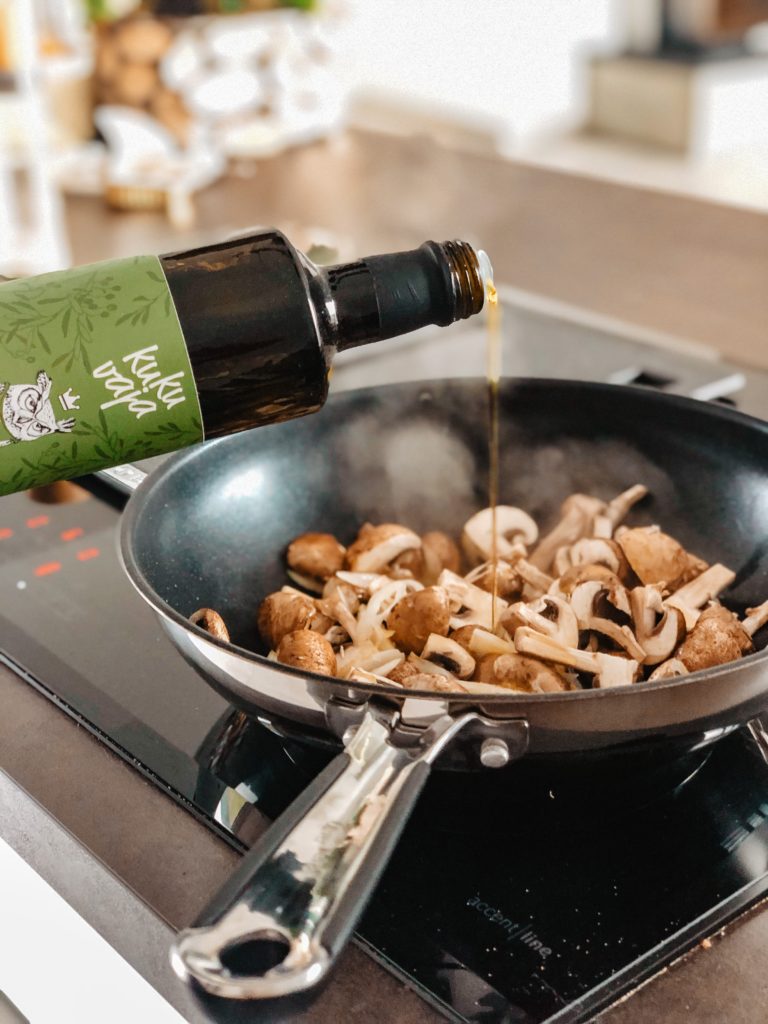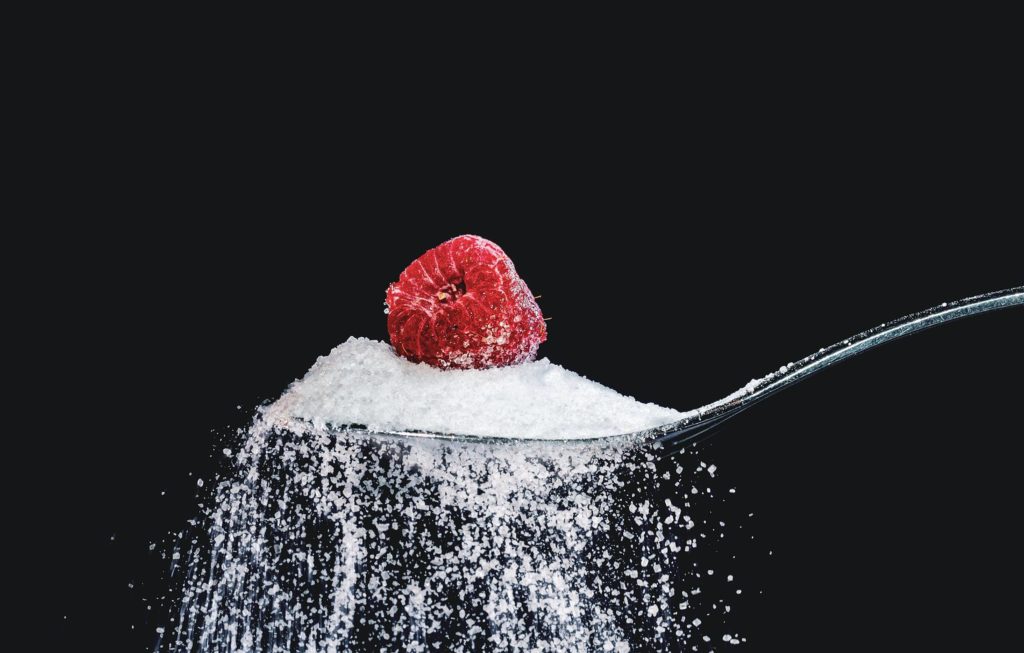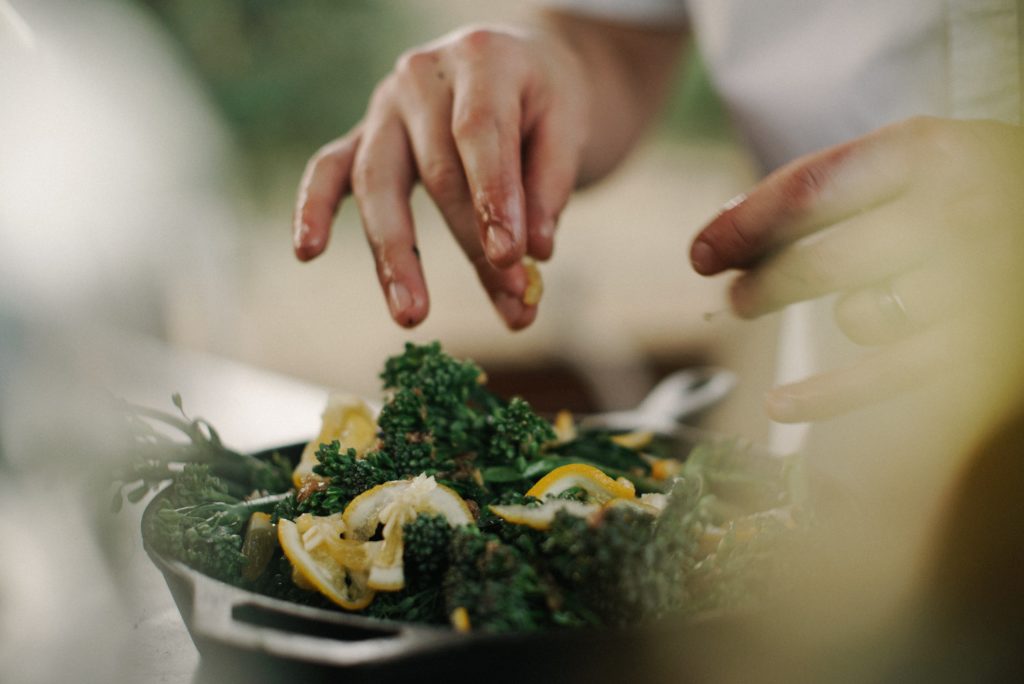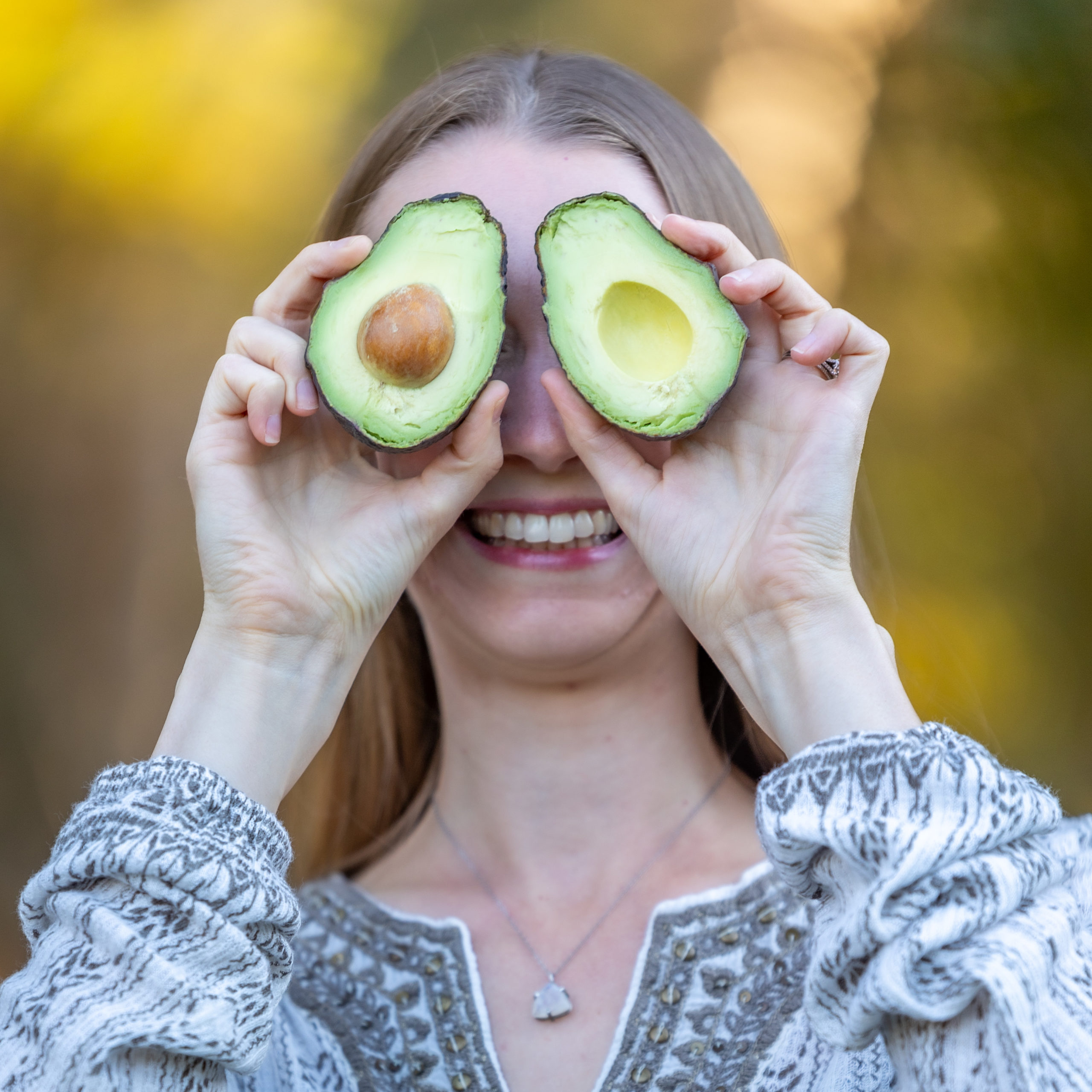Here’s the thing, I’ll cut it to you straight. If your body is sick or out of balance and you want to heal and improve your symptoms, you can’t keep eating and doing the same things that made you sick in the first place. Period. End of story. If your hormones are out of whack or you have a condition like endometriosis, PCOS, or struggle with infertility and you want to get out of that cycle, it is time to make some changes.
What about the whole “everything in moderation” mindset? For the most part, it’s bullshit. Here’s why: who says what is moderation? Well, YOU do! So what our brains do is tell us that whatever amount we are eating is “in moderation.” Now there are times that this can come into play. Having a glass of wine at dinner a few times a week rather than downing the whole bottle is certainly a good compromise for your health. But those ultra processed foods sitting in your pantry? It’s time to say good-bye.
Does this mean you need to drop everything you love to eat immediately and replace them with “boring,” healthy foods? Not at all. I encourage everyone to move at a pace that feels manageable. Your mental health is important too and we are working on making lasting changes that you can live with for the long haul, not a quick fix diet plan. Start by crowding out the unhealthy foods by putting all the healthier options on your plate first. Or start with one meal at a time. Make a few healthier swaps on your next trip to the grocery store. Up your breakfast game or give your lunch a makeover.
But another great place to start is cleaning out your pantry. Let’s be real, junk food is addictive. It is literally designed that way. Want to hear more details on that? Check out the book Salt Sugar Fat: How the Food Giants Hooked Us by Michael Moss. It is a very eye-opening read. The short story is that there are people out there whose job it is to determine the exact amount of salt, sugar, and fat to put in these ultra processed foods to reach the “bliss point,” the place that keeps us coming back for more. Ever sit down and finish a whole box of Cheez-Its or Oreos? Yep. You are not alone.
Why don’t you even take your phone, tablet, or laptop you are reading on into your kitchen with you and start checking out labels and cleaning out your pantry while you read? Take it one step at a time. You don’t even have to do all the steps right now, today. Maybe do it in stages so you don’t feel overwhelmed and deprived. The best place to start is by starting. We’ll do it together. Ready? Here we go.
Step One: Use it or lose it
This first step is a relatively easy one. Take a look through your fridge and pantry and just throw away anything that is too old to eat. Wilting vegetables in the back of the crisper drawer? Toss it. Box of crackers that has been in your pantry since 2005? In the trash. Anything that smells off, is expired, is moldy or stale can go. Anything that is right on the cusp of going bad? Use it up! This is a good place to start because usually we aren’t emotionally attached to expired food. We can just let it go. But the act of beginning to clean up can feel so freeing that it makes us want to do more.
All done? Great! Let’s move on to step 2.
Step Two: Check your fats

By this I mean your cooking fats of course! This is another one that is simple to do, but can make some truly dramatic changes to your health. Studies have correlated refined vegetable oils with a multitude of health issues such as inflammation and heart disease. They are highly unstable and the process of extracting these oils actually makes them rancid so that they have to be deodorized before they are packaged. Seriously gross.
So take a look in your pantry and fridge for the following oils and chuck them in the trash. Do it now and never look back.
- Canola
- Crisco
- Safflower
- Sunflower
- Cottonseed
- Soybean
- Corn
- Peanut
- Rice bran
- Margarine
- Generic “vegetable oil”
So what do you use to cook then? Replace these with the fats and oils listed below.
- High heat cooking: ghee, coconut oil, tallow, lard, or duck fat
- Lower heat cooking/finishing oil: olive oil, avocado oil, and butter
While you’re at it, take a look in your packaged products too and see what products contain these oils. Look especially for anything that says “hydrogenated” or “partially hydrogenated.” These are trans fats and cause free radical damage to our cells. A healthy alternative? A whole food choice is best, but even swapping out to a packaged food that does not contain trans fat is a good step forward.
Are you finding it overwhelming to throw out everything that contains these oils? It’s totally okay to pick just your top three to five of these foods that you eat on a regular basis and find healthy swaps for those. Then when you feel ready, you can swap out a few more!
Step Three: Ditch the chemicals
Fake man made ingredients added to our food include food dyes, artificial sweeteners, preservatives, MSG, artificial flavorings, and more. These artificial and chemical ingredients can cause direct damage to your endocrine, digestive, cardiovascular, immune, and neurological systems. They also offer no nutritional benefit. So it’s time to let them go. These ingredients are relatively easy to spot because, well, they are not food. Any ingredients that you can’t pronounce or don’t recognize, let it go. Any ingredients that have a number or acronym (example, red #40 or BHT), let it go. Any ingredients that include a process such as hydrolyzed or hydrogenated, definitely let it go. This one can be tough because, again, it is so prevalent in so many packaged foods. But trust me, your body will thank you.
All done? Now it’s time to move on to…
Step Four: Sugar swap
I have so much to say about sugar. Sweet sugary foods are something we use as a source of comfort. They become a reward or a way of celebration. We associate these foods with holidays, family gatherings, happy memories. All of that can be so hard to turn away from. I get it. And here’s the thing, for most of us our health will not be completely ruined by having a slice of pie at Thanksgiving or a piece of cake and ice cream at a birthday party. But eating this stuff all day, every day? That is something we need to take a hard look at.
Sugar consumption has gone up enormous amounts in a short time. Back in the 1600s, sugar was a rare commodity only enjoyed by the wealthy. Now sugar is cheap and everywhere. Humans went from consuming a few pounds per person per year to now averaging between 150-200 pounds of sugar per person each year. That jump is massive and has had massive impacts on our health! Click here to read more about the link between blood sugar and your hormones.
When we think of sugar, we often bring to mind pastries, cookies, ice cream, packaged treats like Hostess cupcakes, and candy. These items absolutely are filled with sugar. But did you know that sugar is hidden in a vast majority of packaged foods? Check out your crackers, your chips, your protein bars, your bread. Even check out your ketchup, your salad dressing, your yogurt, your bacon! Unless you are consciously searching out products with little or no sugar, it is likely that your products are quite full of it.
The challenging part here is that there are 61 different names used for sugar on food labels. High fructose corn syrup is a common one as are artificial sweeteners like aspartame, sucralose, and sorbitol, and chemically altered sugars like dextrose and maltrose. Look for ingredients that end in -ose. Click here for a full list of the different names of sugar you will find.
More unprocessed sugars like turbinado, coconut sugar, honey, maple syrup, and date sugar can be okay in small amounts, depending on your bio-individual needs.
Make it a habit to check food labels. They really can tell you a lot if you understand how to read them and now you are well on your way!
Hang in there, we are almost there!

Step Five: Replace refined grains
Some of us may be sensitive to grains or gluten and need to remove these from our diets entirely. For many people though, it is going to be more a matter of taking a look at how many refined grains you are eating and making some healthier swaps. Bleached white flour or even wheat flour enriched with synthetic vitamins and minerals simply does not add much in the way of nutrition to your diet.
If you do tolerate grains, try swapping these out with versions made with more traditional grains like einkorn, spelt, kamut, sorghum, amaranth, quinoa, or buckwheat or even homemade versions using sprouted flour or sourdough.
There are also many grain-free options out there these days made with flour from coconut, cassava, tigernut, arrowroot, or tapioca. Or what about even using whole food swaps like using sweet potato rounds like a bread or bun, making chips out of kale or beets, using lettuce or nori for a wrap? There are so many wonderful whole food options that can give you that base you are looking for, but will also add nutrients to your plate and nourish your body.
One more step to go, friend, and this is an important one.
Step Six: Get in the kitchen
There really is no way around it. If you want to eliminate these toxic ingredients from your diet and nourish your body back to health it’s time to get cooking. Remember that cooking doesn’t have to be complicated. Start by making some scrambled eggs for breakfast, if you can tolerate them. Throw together a simple salad for lunch. Make a big pot of soup you can reheat throughout the week.
Maybe even take a look through some of the pantry staples you are tossing out and see if you can make a healthier version from scratch! Get familiar with fresh ingredients. Start to build a connection with your food. Get out there and take a cooking class with a friend or get together with a family member who loves to be in the kitchen. It is never too late to learn and truly anyone can develop basic cooking skills. The goal here isn’t to become a professional chef (unless that interests you of course!). The goal is to nourish your body with the best whole food ingredients you can find.
Friend, you have done an amazing job. Just by reading this post and educating yourself around what is in your pantry you are a step ahead. Pat yourself on your back.
Now I know that reading this information and learning about the negative impacts that the food you are eating can have can come as a shock. It can make you start to question everything you are eating. This is where it is important to remember that your mental health is important and will impact your physical health as well. It is okay to let loose and have a fun meal out with friends on occasion. It is okay to have that one food that you go to once in a while when you are having a bad day. Give yourself permission to have these moments and not feel guilty.
You may find that with time and space some of your old favorites just don’t taste that good anymore. You may find that as you start to become more connected with whole food ingredients as you cook that you just don’t crave those potato chips anymore. You may find that as you start to see positive results from the positive changes makes you want to make more healthy choices in your life. But your path is yours alone. I am here to walk alongside you and help you on your journey.
Wishing you all the best! Much love and happy healing!
Looking for a place to start on your own journey towards health right now, today? I would love to hear from you. Click here to schedule a FREE 15 minute discovery call so you can share your story and I can answer any questions. Or subscribe to my blog below and be the first to know when there is something new to read!

References:
University of California San Francisco: Sugar Science. Hidden in Plain Sight. Retrieved from: https://sugarscience.ucsf.edu/hidden-in-plain-sight/#.Ymmjay2ZORs
Happily Unprocessed. Refined Oils and Why You Should Avoid Them. Retrieved from: https://happilyunprocessed.com/the-basics/refined-oils-and-why-you-should-never-eat-them/
Nutritional Therapy Association. (2021). Culinary Wellness Part 1 Student Guide [PDF Document].
Nutritional Therapy Association (2021). Evolution of the Modern Diet Student Guide [PDF Document].


